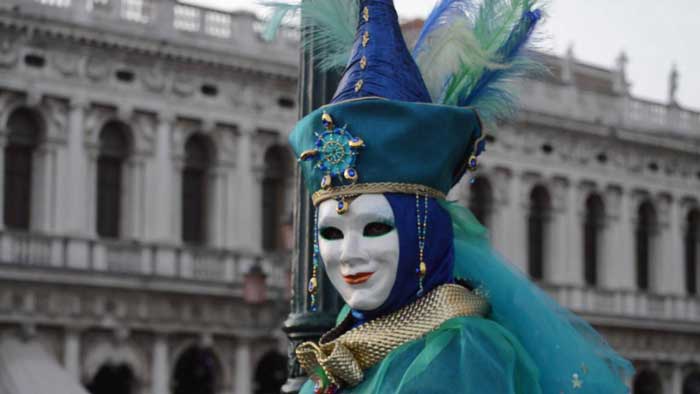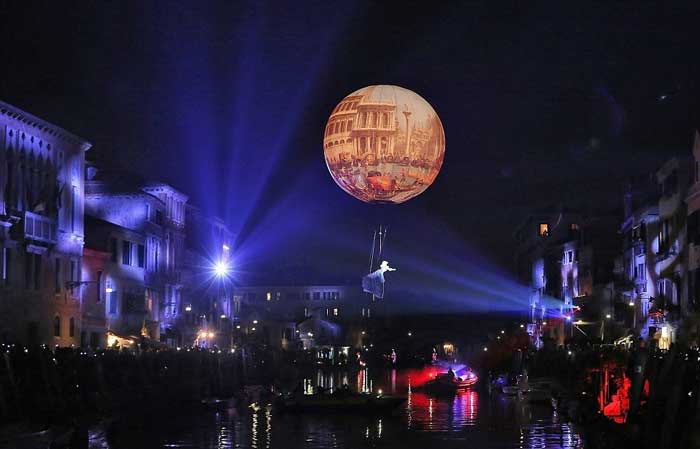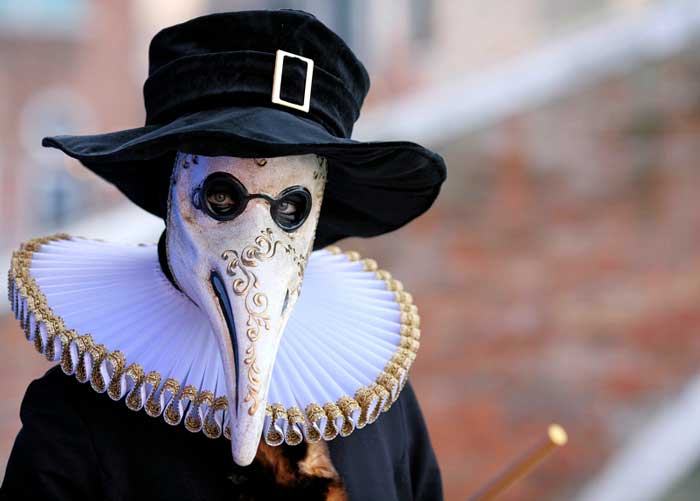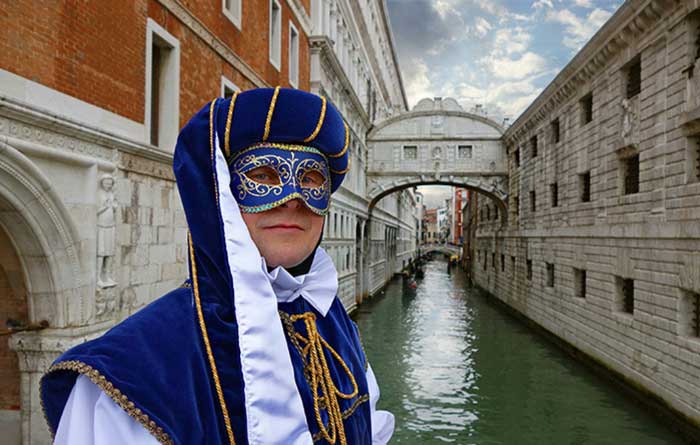
Carnevale di Venezia, considered as Venice’s reply to Mardi Gras, is agrand traditional festival held annually in Venice. The carnival is remarkable in the true sense of the term, especially for its elaborate traditional masquerade aspect. Each winter before Lent, tourists flood the city of Venice for an orgy of pageants, concerts, balls, and masked self-display associated with the carnival. The carnival starts around two weeks before Ash Wednesday and continues till Shrove Tuesday (Fat Tuesday or Martedì Grasso or Mardi Gras), the day before Ash Wednesday.
Apart from Venice, similar types of festivities and carnival are regularly arranged throughout much of the Roman Catholic world, including other cities in Italy. The masquerade aspect associated with the Carnival of Venice is even older - the Romans celebrated winter with a fertility festival where masks were worn by the citizens and the slaves alike.

The year 1162 is considered as the beginning of the Carnevale of Venice, after a victory of the Republic of Venice against Ulrici di Treven of Italy. It all started when the people, on hearing the news of victory gathered in San Marco Square and started to dance spontaneously. Later it became official in the Renaissance.
It is clearly evident from the fresco on the walls of the famous Caffé Quadri's that during the 18th century the carnival used to start with a series of balls in St Mark's Square. Every night, during those unbridled days of the carnival, people, irrespective of their social status, wore costumes and masks to hide their identity for temporal escape from inhibition. The unrestrained gambling accompanied by prolonged partying during those days, associated with the general irresponsibility of the mass reflected the decline of the Venetian Republic with the rise of Dutch and British trade in the 1600s. After Napoleon Bonaparte conquered Venice in 1797, the Republic was doomed and so were the desultory remnants of Carnival.


In 1797, the King of Austria banned the Carnevale di Venezia and the use of the masks was also strictly prohibited. However, that was not the end of it. The Venetians never lost their appetite for disguise and almost after 200 years of suspension, the Carnival resurrected in 1979, when the government decided to bring it back as a part of Venetian tradition and culture.
Since the thumping revival of the grand carnival, people from all over the world flock together in Venice to attend and participate in the gala festival and at the same time, to gather the memorable experience of a lifetime. To get the feel of the thrill they wore special costumes, hide their identity beneath the obscuring masks and parade proudly around the city, side by side with the Venetians. They enjoy the live music in the main squares of the city, find the jugglers and entertainers in every nook and corner, find the narrow canals full of lively and colorful boats and thus feel as if they are in a wonder land.


The Carnival of Venice, with all its fun and fantasy, starts with the ceremony of the ‘Flying Angel’ in which a girl hanging on steel roper flies from the Bell Tower of San Marco to the stage in the Square. A series of decorated boats keep on sailing along the iconic waterways of the city, while hundreds of eager souls wait on the bridges to wave and cheer the costumed boatmen, dressed in the traditional red and white shirts along with straw hats. Bands play on the boats, sending traditional Venetian tunes reverberating through the streets of the old city. Reflected lights from the illuminating the boats lit up the water of the canals and it seems that hundreds of floating lanterns are slowly moving away along the romantic waterways.



An outstanding evening show includes music, rhythm and lots of entertainment on the banks of Cannaregio, which is truly a worthy experience. The Official Dinner Show and Ball in the majestic ca’ vendramin Calergi Palace is not simply a dinner, it is an exclusive experience where the pleasures of the palate and party come together.
The masquerade is one of the most important aspects associated with the carnival. There are several different styles of masks that are worn during the Venice Carnival and one of the most important events during the carnival is the contest for the most beautiful mask, named ‘la maschera più bella’, which is judged by internationally famed costume and fashion designers.


Venetian masks can be made of different materials, like leather, feather, porcelain or using the original glass technique. However, the Italian masks are mainly made of natural feathers, which are hand-painted and ornamented with gold leafs. The Bauta Mask was regulated by the Venetian government as the standardized society mask in the 18th century. Colombina Mask, often decorated with gold and silver, is actually a half-mask which covers the eyes, nose, and upper cheeks. It is said that, this mask was designed for an actress, as she was unwilling to have her beautiful face covered completely. But, among all the Venetian masks, the Plague Doctor Mask is considered as one of the most bizarre and most popular. It was originally used as a method of preventing the spread of disease. People, who wear this mask in the carnival, often also wear the associated clothing.
During the Carnival of Venice, the nights always seem to be too young. It always promises an unexpected new pleasure and an unknown thrilling passion.
